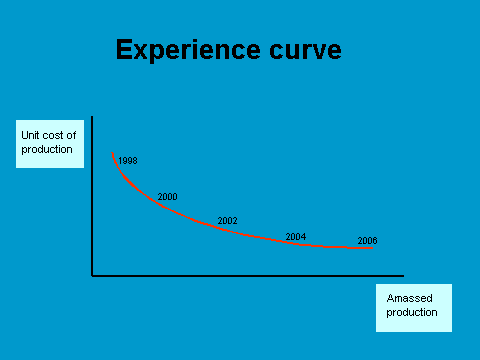Cost advantage
When facing the strategy analysis of an enterprise, the concept of costs advantage is very important. The benefits from the competitive advantage and market quota derive from economy studies which come from cumulative experience. In this sense, we must point out that the development of the experience curve as a strategic analysis tool is mainly attributed to the Boston Consulting Group (BCG).
Among the studies conducted by the BCG, they observed an important constant in costs reduction (and later in prices for clients) as fruit of an increased amassed production. As a matter of fact, the BCG summarized its observations in their “experience law”, which states:
“The unit cost of the added value to a standard product decreases in a constant percentage (normally between a 20 to 30%) every time the amassed production doubles”.
We define this unit cost of added value as “the cost per production unit minus the unit cost of purchased components and material”. We have to include in this definition the fact that if component and material providers experience similar reduction in costs in conjunction with an increase in volume, the unit cost would substitute the unit cost of the added value.
Next, we see a graphic representation of the experience curve in which we can observe how costs are reduced in proportion to the amassed production.

The relationship between the unit cost and volume of production can be expressed in the following way:
C n = C 1 * n -a
Being,
C 1 = the cost of production for the first unit
C n = the cost of production for the tenth unit
n = the volume of amassed production
a = the elasticity of cost in relation to production